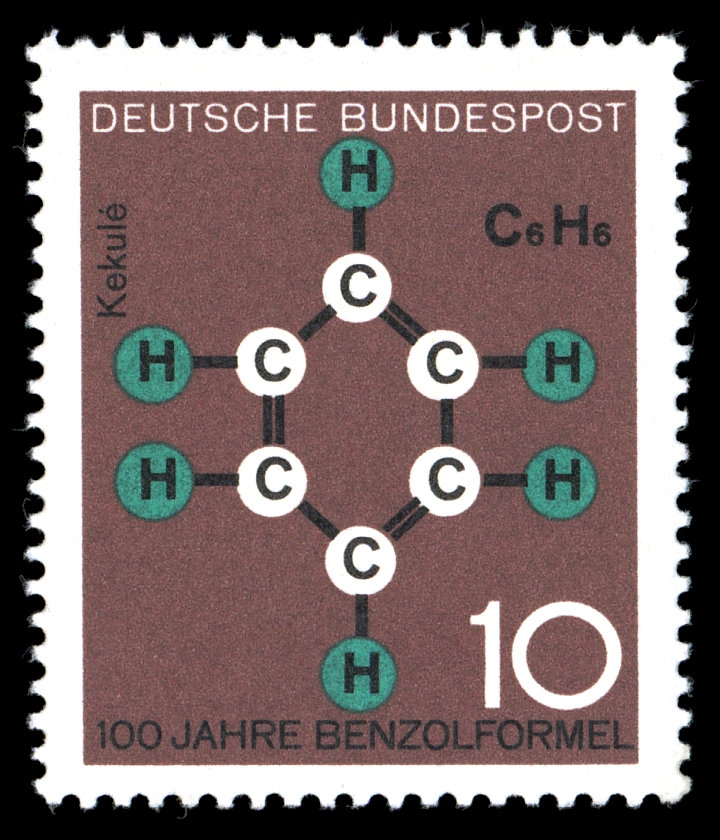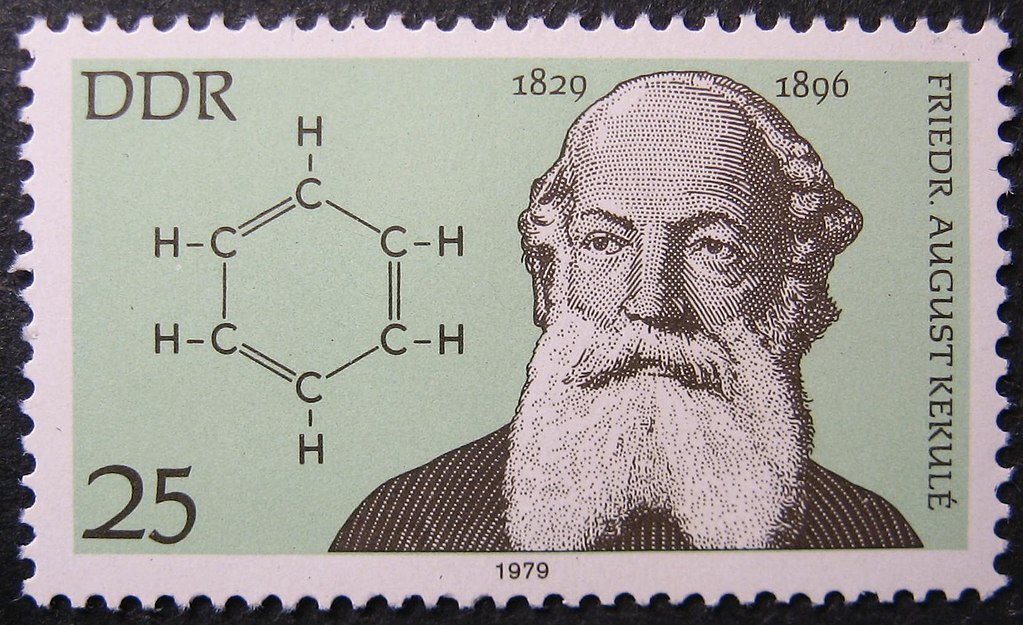
August Kekulé, a German organic chemist, is famous for his work on the structure of benzene. Here’s how he arrived at it:
Kekulé was struggling to understand the structure of benzene, a molecule with six carbon atoms. One evening, he fell asleep in his chair and had a dream. In his dream, he saw a snake biting its own tail, forming a ring shape. This vision inspired him to propose the ring structure of benzene, with six carbon atoms bonded in a circular arrangement.
When he woke up, Kekulé realised that the snake’s ring shape was the key to understanding benzene’s structure. He worked out the details and published his theory, which revolutionised organic chemistry.
Kekulé’s dream has become a legendary example of how the subconscious mind can aid in problem-solving and creative insights. It’s a testament to the power of imagination and the importance of embracing unconventional thinking in science.
This anecdote has been passed down for generations, inspiring scientists and non-scientists alike to explore the mysteries of the human mind and its role in discovery.
There are several instances similar to Kekulé’s dream of renowned scientists and artists reporting sudden insights or discoveries triggered by dreams, visions, or unconventional thinking. Here are a few examples:
Paul McCartney attributed the tune for “Yesterday” to a dream. He woke up with the melody in his head and quickly wrote it down.
Mary Shelley claimed that the idea for her novel “Frankenstein” came to her in a dream.
Elias Howe, inventor of the sewing machine, struggled to develop the lockstitch mechanism. He had a dream in which he was taken captive by a group of savages who danced around him with spears that had holes in the tips. This dream inspired him to design the needle with an eye at the point.
Albert Einstein reported that his theory of relativity came to him through a series of thought experiments and daydreams.
James Watson credited a dream with helping him understand the double helix structure of DNA.
Srinivasa Ramanujan, a self-taught Indian mathematician, often reported that his mathematical insights came to him in dreams.
These anecdotes illustrate how the subconscious mind can aid in creative problem-solving and inspire innovative ideas. They highlight the importance of embracing unconventional thinking and exploring the mysteries of the human mind.
Image above: West Germany issued a postage stamp in 1964 to commemorate the centenary of the discovery of the molecular formula of benzene.

Friedrich August Kekulé (1829-1896) was, from the 1850s until his death, one of the most prominent organic chemists in Europe, especially in the field of theoretical chemistry. He was the principal founder of the theory of chemical structure and in particular the Kekulé structure of benzene. Image: A commemorative postage stamp on Kekulé issued by East Germany in 1979.
Images courtesy Wikipedia.
